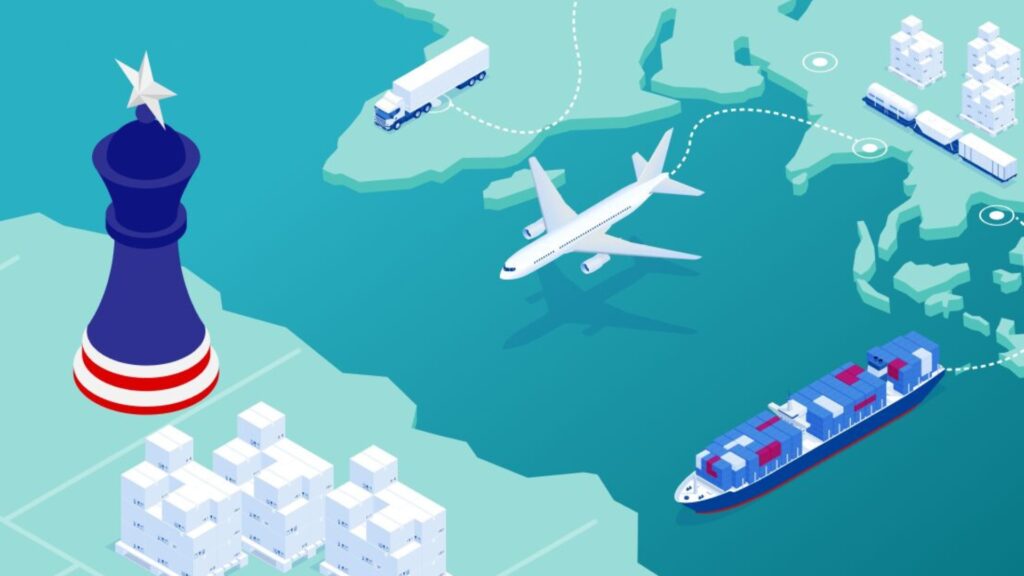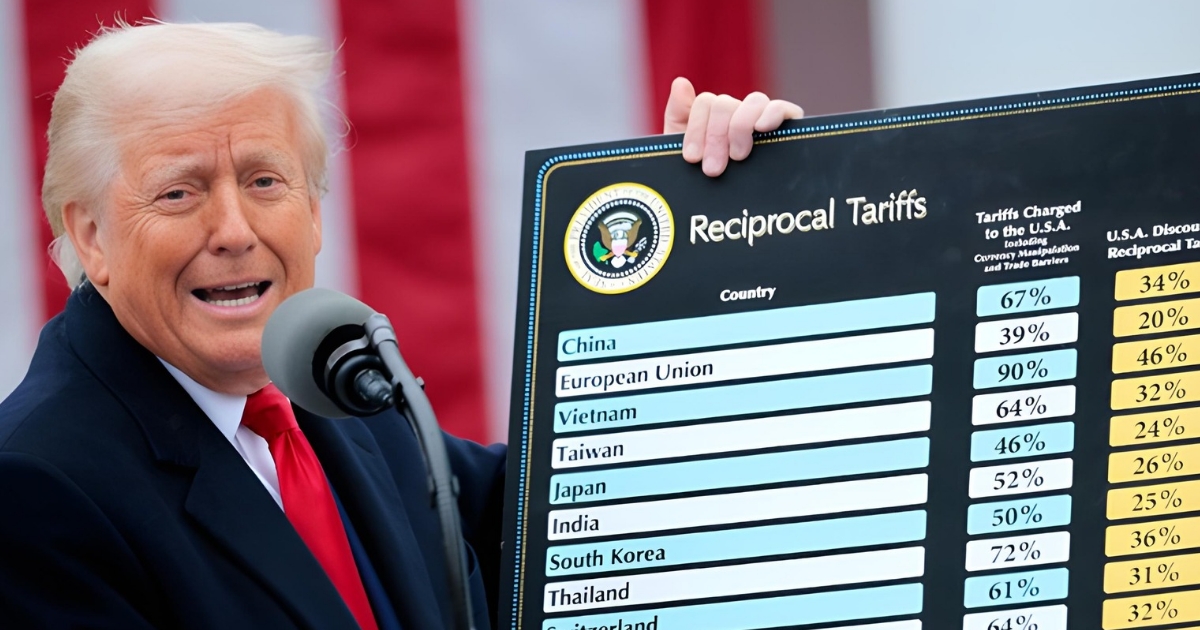The Shocking Rise of Economic Nationalism: Inside Trump’s Explosive Tariff Wars
The Resurgence of Protectionism and Trump’s Tariff Strategy
The 21st-century protectionist resurgence is a paradigmatic turnabout of global trade policy, and no one has embodied this turn more vigorously than former U.S. President Donald J. Trump. His administration’s blanket use of tariffs—tools long seen as anachronisms in the age of globalization—was a revolutionary departure from the free-trade orthodoxy that had ruled global commerce since World War II. Trump’s tariffs were not technical modifications: they were ideological: a reassertion of economic nationalism and an effort to reorient America in a more globalized economy he viewed as exploitative. By taxing allies and adversaries alike, Trump aimed to reorganize global supply chains, upend trade institutions, and restore American economic sovereignty.
Tariffs, historically, are old news. In the early decades of the American republic, they were primary sources of revenue—comprising as much as 90% of federal receipts before the institution of the income tax in 1913—and were used to protect new industries from foreign competition. Defenders like Alexander Hamilton and Abraham Lincoln were advocates of tariffs as instruments of national advancement and economic nationalism. But following the economic devastation of the Great Depression, which was worsened by protectionist policies like the Smoot-Hawley Tariff Act, global sentiment shifted.
In the post-World War II years, institutions like the General Agreement on Tariffs and Trade (GATT) and its later incarnation, the World Trade Organization (WTO), promoted trade liberalization, integrating national economies into a single global system. This paradigm brought growth and lifted millions out of poverty around the world—until the Trump administration swung the pendulum back toward economic isolationism.
What differentiated Trump was the scope and tenor of his protectionism. Past administrations had selectively raised tariffs, but Trump took a maximalist approach: a 10% across-the-board tariff on all imports and up to 145% targeted tariffs on select Chinese products. This aggressive approach was meant to cut trade deficits, restore domestic manufacturing, and counter what he termed unfair country practices by nations like China, including intellectual property theft and forced technology transfers.
China retaliated in kind, escalating the war to all-out trade war. Although the U.S. trade deficit with China did narrow modestly, aggregate trade imbalances continued as supply chains migrated to nations like Vietnam and Mexico. U.S. firms, saddled with the increasing cost of foreign inputs, tended to rely on automation or pass the costs on to consumers instead of rehiring workers.
Domestic and Global Economic Consequences
The real-world effect was significant. The Tax Foundation estimates the typical American family at $1,300 more annually in tariff-caused price hikes on products like electronics, automobiles, and clothing. Small- and medium-sized businesses, lacking the negotiating leverage to pass on or negotiate these costs, were disproportionately hit. U.S. manufacturing jobs, rather than rebounding, continued to decline.
Structural forces—automation, digitization, and capital efficiency—were responsible for more of this decline than foreign competition, based on Bureau of Labor Statistics data. China and European Union retaliatory tariffs hurt American exporters, particularly farmers, leading the government to subsidize billions of dollars to keep farmers profitable—all in the name of economic nationalism.
Globally, the effects were even more destabilizing. The WTO reduced its 2025 trade estimate to a 0.2% decline in world volumes of trade—a drop below recession. Most dramatically, U.S.-China trade declined by over 80%, a marker not just of economic decoupling but rising geopolitical tension. This wave of economic nationalism prompted multinationals, the former beneficiaries of open trade, to embrace “friendshoring” tactics—relocating production to geopolitically friendly nations. Though such realignments are designed to enhance supply chain resilience, they raise costs and introduce inefficiencies into a system that has been optimized for speed and scale.
Trump’s trade wars also shook the foundations of the international financial order. The dollar, the traditional reserve currency, began to receive growing criticism. Central banks alone lost around $59 billion of dollar-denominated reserves in 2024 alone, diversifying into other currencies and gold. The dollar still held 58% of foreign reserves as of early 2025, but its hegemony is at risk.
The BRICS bloc began exploring alternatives, including a gold-backed currency, in the face of frustration with dollar dominance and U.S. sanctions. Trump’s unpredictable economic policies, rooted in economic nationalism, in combination with fear of debt and political instability, have driven the move towards a more multipolar monetary order.

Long-Term Implications and Strategic Realignment
At the macroeconomic level, the signs of trouble are accumulating. Goldman Sachs raised the likelihood of a U.S. recession in 2025 to 45%, on the strength of muted business investment and consumer sentiment. JP Morgan put the probability of global recession at 60%, because of depreciating cross-border trade and finance. The International Monetary Fund reduced world GDP growth to 3.3%—a postwar average. Economists caution that a return to protectionism will unleash a tit-for-tat tariff cycle, lowering global coordination and economic output, as in the 1930s experience.
Finally, Trump’s tariffs policy is not just a trade policy—it represents a redefinition of America’s economic position in the world. By abandoning the multilateralism of the past and embracing unilateralism, his administration undercut the very institutions that had helped create postwar U.S. prosperity. Though the aspiration to revive American industry was commendable, the means—punitive tariffs, trade battles, and financial volatility—might prove too destabilizing and self-destructive.
The greater risk is not economic disruption but the balkanization of the world order into regional blocs characterized by rivalry and exclusion. The issue is no longer if globalization comes back in its old shape, but if the world is prepared for a fragmented, chaotic, and economic nationalist future. Trump’s trade wars have redrawn the map of international trade—and the consequences are only just beginning to be grasped.
Disclaimer: The views expressed in this article are for informational purposes only and do not necessarily reflect the official policy or position of any organization. If you have concerns or believe there are factual inaccuracies, please write to us at info@primejournal.in or Contact Us.
Dhruv K. Vyas is a finance and business tech enthusiast dedicated to exploring the intricacies of global markets and corporate strategies. With a strong analytical mindset, he delves into the evolving landscape of financial systems and business innovations. Through his contributions to PrimeJournal, Dhruv aims to provide readers with insightful analyses and thought-provoking perspectives that bridge practical knowledge with emerging developments in the financial world.



